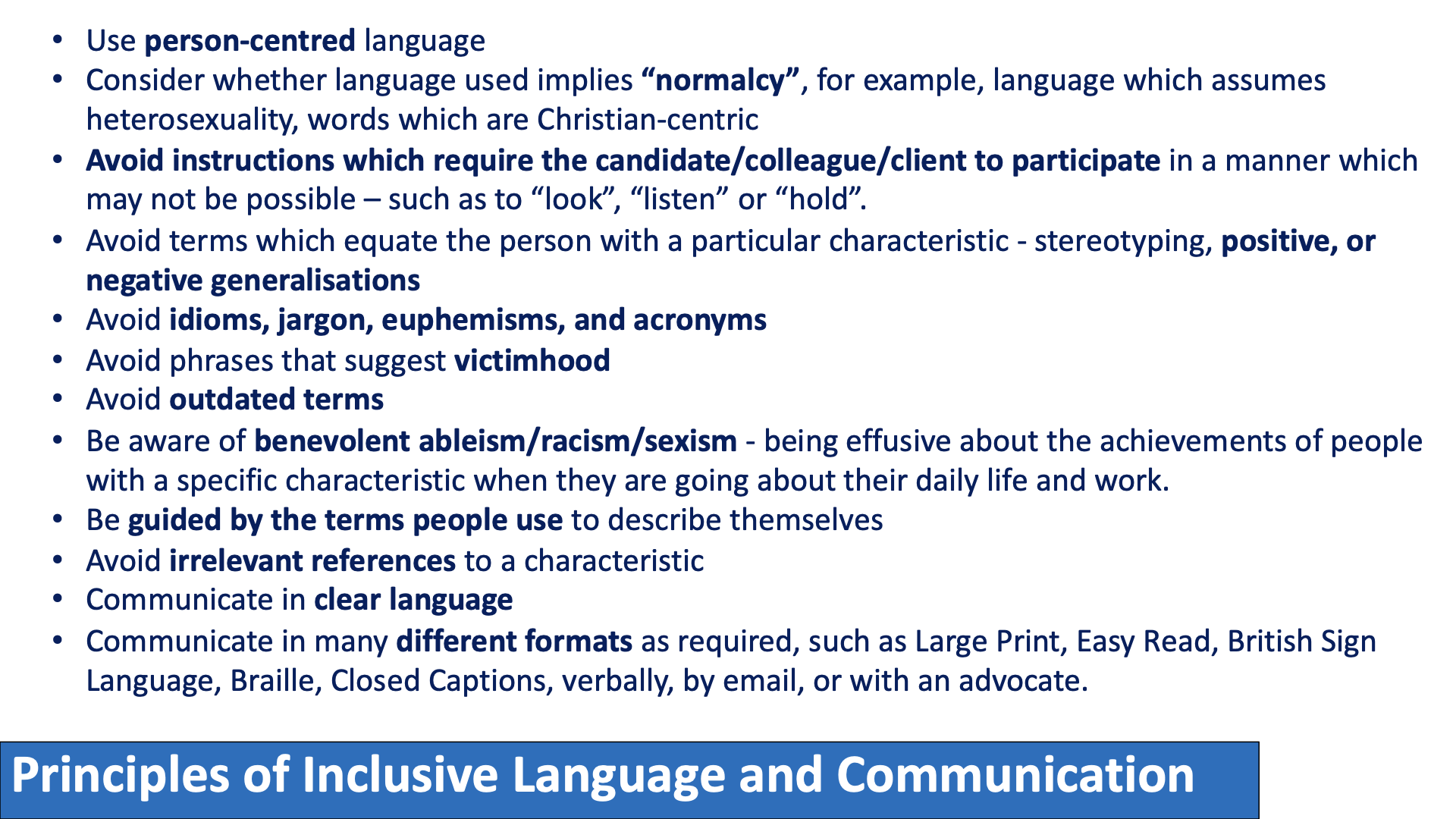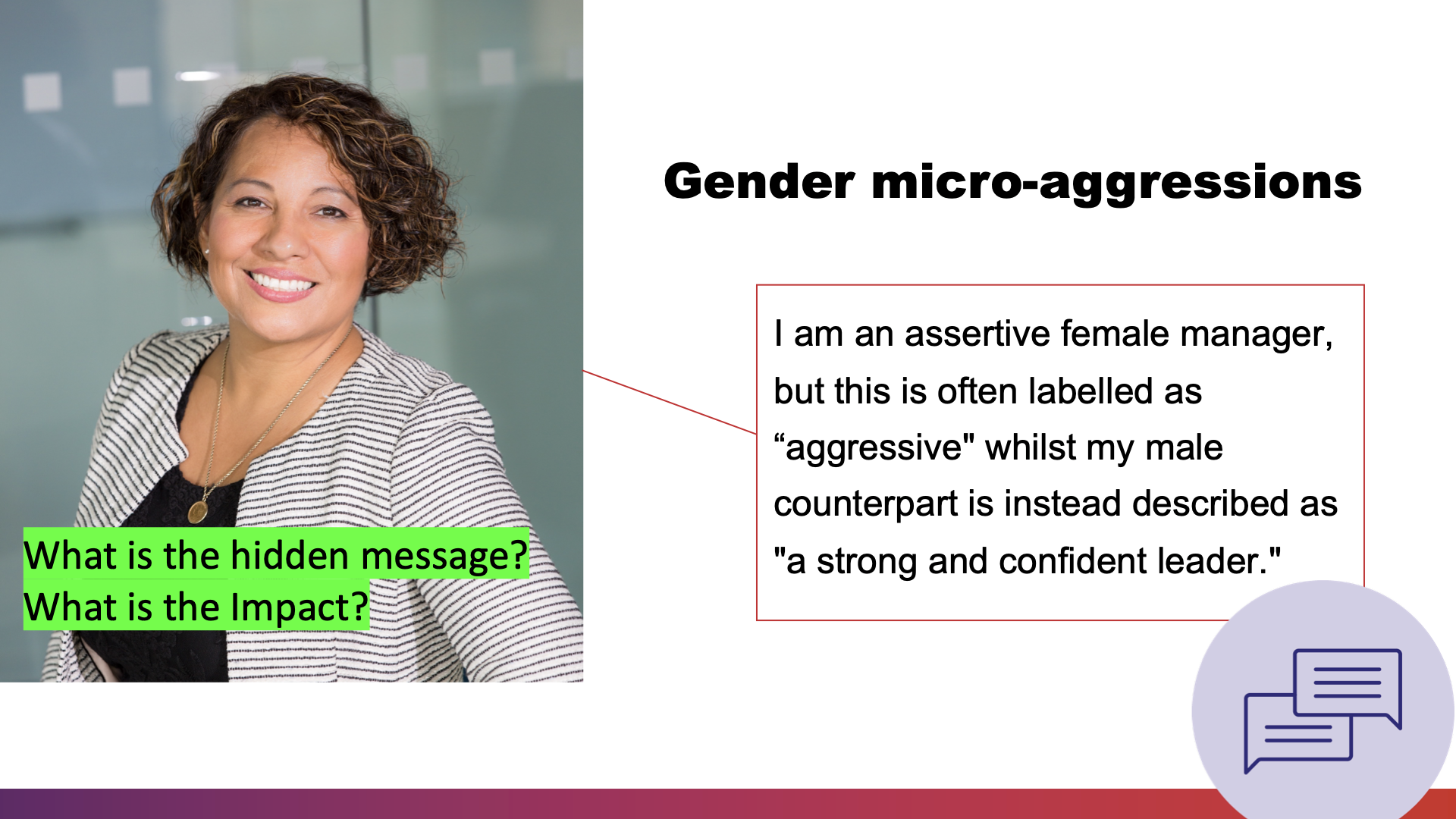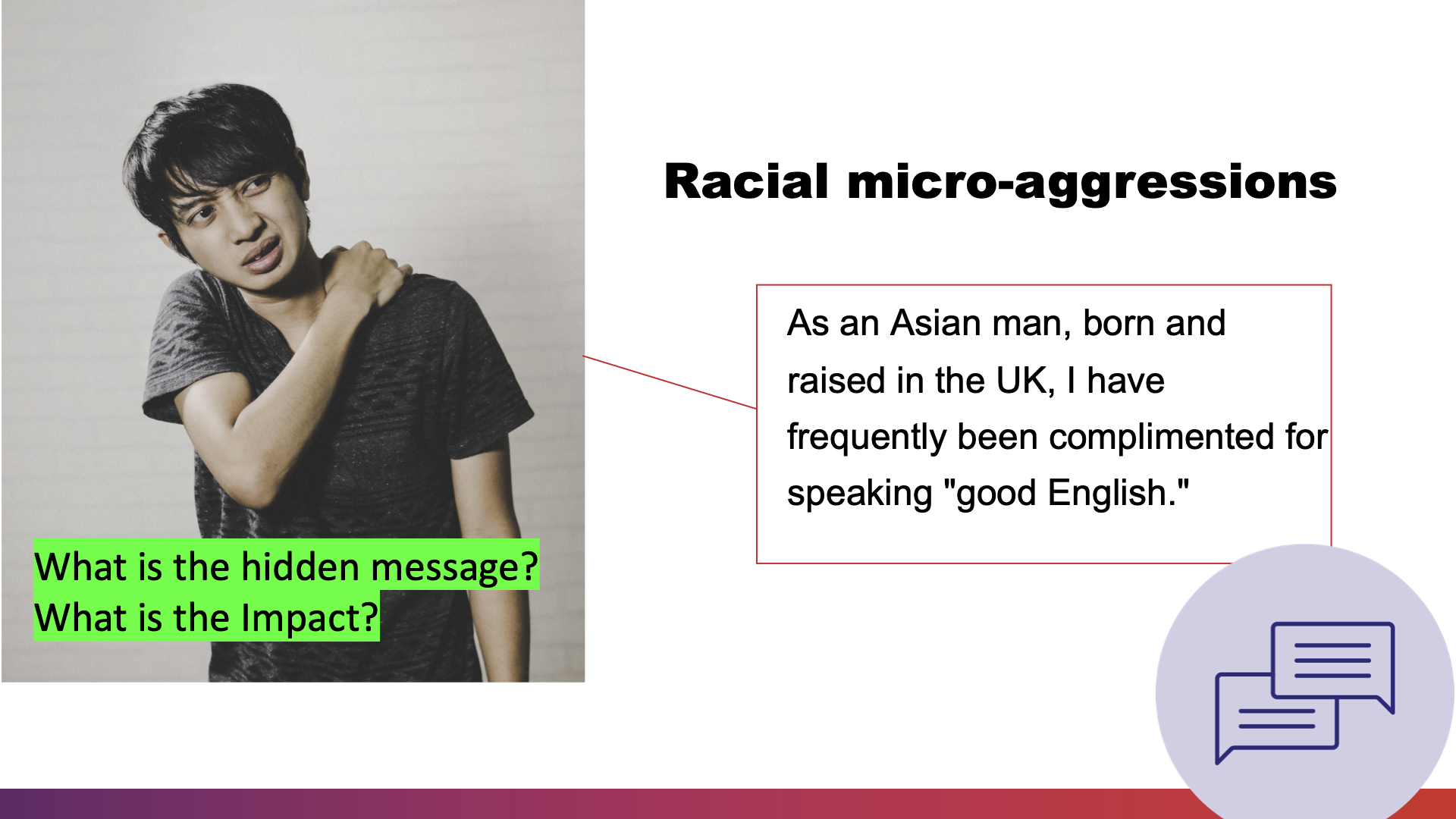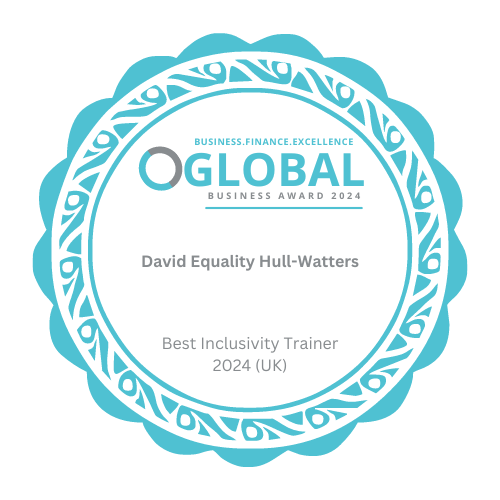Conscious Inclusion
Discussion Topics
Activity One: Defining Diversity & Inclusion Discussion
- The person born earliest in the year will be the Leader
- The Leader will decide on a speaker who will feedback to the whole group, when we return to the Main Room
- Avoid specific reference to names when using examples
- Please make sure that all voices are heard
Objectives:
- Explore the meaning of D&I and understand the need to have both D&I in place in an organisation
- Look at the relationship between a diverse workforce and an inclusive work culture
Your facilitator will guide you through each of the following questions:
- What does Diversity mean to you?
- Does the diversity of staff reflect the people you serve? Is that important?
- What does Inclusion mean to you?
- Are you getting it right? Is it important?
Extra Question:
What areas of diversity and inclusion could be enhanced within the organisation?
Activity Two: Case Studies
- The person born latest in the year will be the Leader
- This is a confidential discussion. No speaker is needed for this activity
- Please make sure that all voices are heard
Discuss your role in each scenario below
Case Study One
Aga currently works for GWR as a Gateline Assistant and has strong interpersonal skills. She has exceptional spoken English but a strong Polish accent.
She is well-liked for her sense of humour and wants to move to a more customer-facing role. She has applied for the recently advertised role of Helpdesk Assistant but her current manager explains that some customers will struggle to understand her and tells her that applying for this new role would be a waste of time.
Was this the correct decision? What would you do differently?
Case Study Two
Melvin works as part of the IFMS (Information Systems) project team.
When Melvin had to leave work early to collect their child from school, they explained to a colleague that the child had been bullied by some classmates because of TICS caused by Tourette’s Syndrome.
On their return to the office the next day, some colleagues played what they considered to be a funny game of randomly calling out words, and mimicking tics.
Melvin made it clear that they didn’t appreciate this behaviour but the colleagues continued with their “game” over the coming days. Melvin feels intimidated and dreads going to work.
What is your role in this situation?
Case Study Three
Dani has been with GWR for 15 years and interviews for an internal promotion as Flagship Duty Station Manager.
They score highest of all candidates but miss out on the promotion, because it is assumed that the responsibilities and commitments required of the new role will be overwhelming to Dani, who is known to have an elderly parent at home who is in the advanced stages of dementia.
Was this the correct decision? What would you do differently?
Case Study Four
Bek has worked as a Part-time Gateline Assistant for over two years. With some initial guidance, and clear step by step instructions they have excelled and now work very independently.
A similar role becomes available so Bek asks if their younger sibling can apply. The supervisor is discouraging of this idea and informs HR that shortlisting Bek’s sibling would be a waste of time because they can’t be expected to “cope” with two “special” staff members.
Was this the correct decision? What would you do differently?
Activity Three: Inclusive Communication - Audit
- The person whose first name comes first alphabetically will be the Leader
- The Leader will decide on a speaker who will feedback to the whole group, when we return to the Main Room
- Please make sure that all voices are heard
Your Leader will guide you through each of the following questions.
In relation to the inclusivity of written and verbal communication:
- What do you and your team already do well?
- Is there anything you'd like to do better?
- What might you or members of your team do differently?
- What could you do less of, in order for your language and communication to be more inclusive?

Activity Four: Subtle Acts of Exclusion (Micro-aggressions)
Instructions
The Leader for this discussion will be the person who most recently joined the organisation.
Guide your team through a discussion about the hidden messages and impact of the 3 Micro-aggression examples below.
A speaker isn't needed for this activity.



Activity Five: Subtle Acts of Exclusion (Micro-Aggressions) Confidential Chat
Instructions
The Leader for this discussion will be the person who has been with the organisation the longest.
Facilitate an open discussion on the questions below.
This activity is completely confidential and won't be shared on our return to the Main Room.
A speaker isn't needed for this activity.
■Do you have any examples of micro aggressions that you have experienced or witnessed?
■What was the impact?
■What action was or should have been taken?
Activity Six: Top Tips for Improving Inclusion
Instructions
- Your leader for this activity will be the person whose first name contains the most letters.
- Your leader will select a speaker for the team.
- Make sure that all voices are heard - consciously include all members of the team!
Objectives:
- Consider how we can we tackle Groupthink
- Suggest at least one more Top Tip for Improving Inclusion
- Discuss how this will benefit the organisation
Top Tips for Improving Inclusion
- Discuss the usefulness of these Top Tips for Improving Inclusion
- As a team, suggest at least one more Top Tip for overcoming Groupthink and Improving Inclusion
1. Interrupt the interruption - women get interrupted 2.8 times more often than men, when women voice views they are punished with 14% drop in how competent they are perceived - so hold back from speaking up - hence important to create interruption-free space
2. Share perspectives silently - 74% of people in a group conform to the view of the majority (Solomon Ashe)- write down perspectives and group conformity vanishes - gives equal access to diverse perspectives
3. Conquer ‘Group Think’ - divide groups into many small and different kinds of groups that work independently of each other - compare the outcomes of each group.
4. Flip perspectives. - e.g., present a project as a 90% chance to succeed to one group and a 10% risk of failure to another group, changing the anchoring mitigates group think, compare results
5. Leaders and experts hold back- be the last to contribute and give permission for others to critique your views
6. Reframe ‘conflict’ - often seen as negative - reframe to 'friendly challenging', to uncover blind spots – take it in turns to play ‘devil’s advocate’
7. Take another perspective - what would others/a new leader/a leader whose leadership skills you admire do to deal with this challenge?
8. We can pay attention to the ways we deliberately include people, creating the feeling of being valued, respected and included instead of excluded.
9. Don’t be a bystander – be an ally to those who have been overlooked or those who are on the receiving end of discrimination.
Discuss:
What additional Top Tips do you have for improving inclusion and overcoming groupthink?
What can you do to encourage others to present alternatives, critique a position, or even to express an unpopular opinion?
What could the organisation do to encourage others to present alternatives, critique a position, or even to express an unpopular opinion?
How might this be of benefit to the organisation?
















